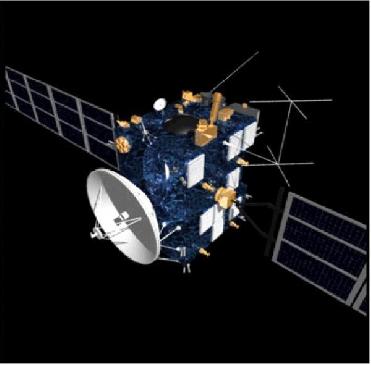
WASHINGTON (BNS): NASA's Phoenix Mars Lander completes 90 Martian days or Sols on Aug. 26. It has successfully completed its primary mission after it landed on the Red Planet, mars on May 25, and will be sending a sample of Martian soil for analysis, taken from a trench, nearly three times deeper than any other trench Phoenix Mars Lander has dug.
The Phoenix's main task for Sol 90 is to scoop up a sample of soil from the bottom of a trench called "Stone Soup," which is about 18 cm, or 7� deep. During a later sol, the Lander's robotic arm will sprinkle soil from the sample into the third cell of the wet chemistry laboratory. A part of Phoenix's Microscopy, Electrochemistry and Conductivity Analyser (MECA), has been used for two of its four soil-testing cells.
Expressing happiness over the success of the mission, Phoenix Project Manger Barry Goldstein of NASA's Jet Propulsion Laboratory, (Pasadena, California) said, "As we near what we originally expected to be the full length of the mission, we are all thrilled with how well the mission is going."
Meanwhile, MECA�s lead scientist, Michael Hecht of JPL said, "In the first two cells we analysed samples from the surface and the ice interface, and the results look similar. Our objective for Cell 3 is to use it as an exploratory cell to look at something that might be different." He further said that the appeal of Stone Soup is that it may collect and concentrate on different kinds of materials.
Stone Soup lies on the border between two of the low polygon-shaped hummocks that look like the arctic plain and landing place of Phoenix. The trench falls towards the left, or west, end of the robotic arm's work area on the north side of the Lander.
Talking about the trough, Hecht said, �the trough between polygons is sort of a trap where things can accumulate. Over a long timescale, there may even be circulation of material sinking at the margins and rising at the centre."
Hecht said that the team of investigators had zeroed in on two sites to deliver Martian samples to the wet chemistry lab, but had finalized on Stone Soup. He said that there was a shootout between Stone Soup and white stuff in 'Upper Cupboard� trench. The MECA team leader said that they were unable to confirm what the white material substance resembling a salt-rich deposit was.
He said that work was on to gather information about salt distribution in the Phoenix work area, which could highlight on the fact on presence of water. The indication of the presence of proves that the area may have had water. Phoenix is using Thermal and Evolved-Gas Analyser to deliver sample from Stone Soup to wet chemistry laboratory.
 Previous Article
Previous Article













The Indian Air Force, in its flight trials evaluation report submitted before the Defence Ministry l..
view articleAn insight into the Medium Multi-Role Combat Aircraft competition...
view articleSky enthusiasts can now spot the International Space Station (ISS) commanded by Indian-American astr..
view article